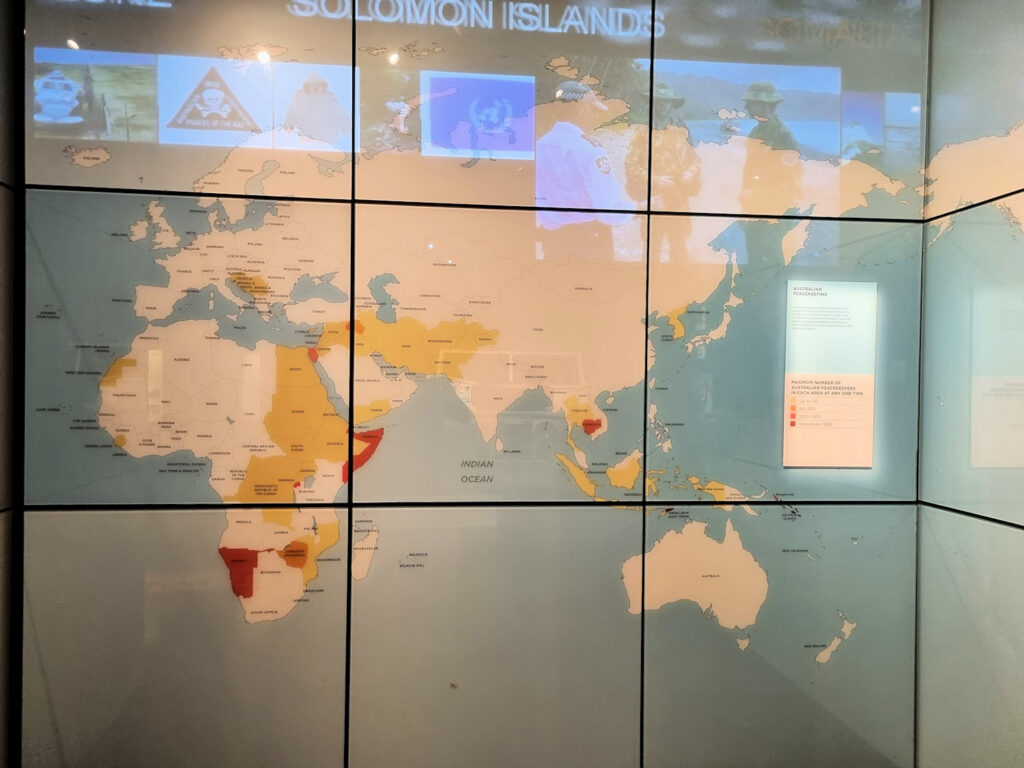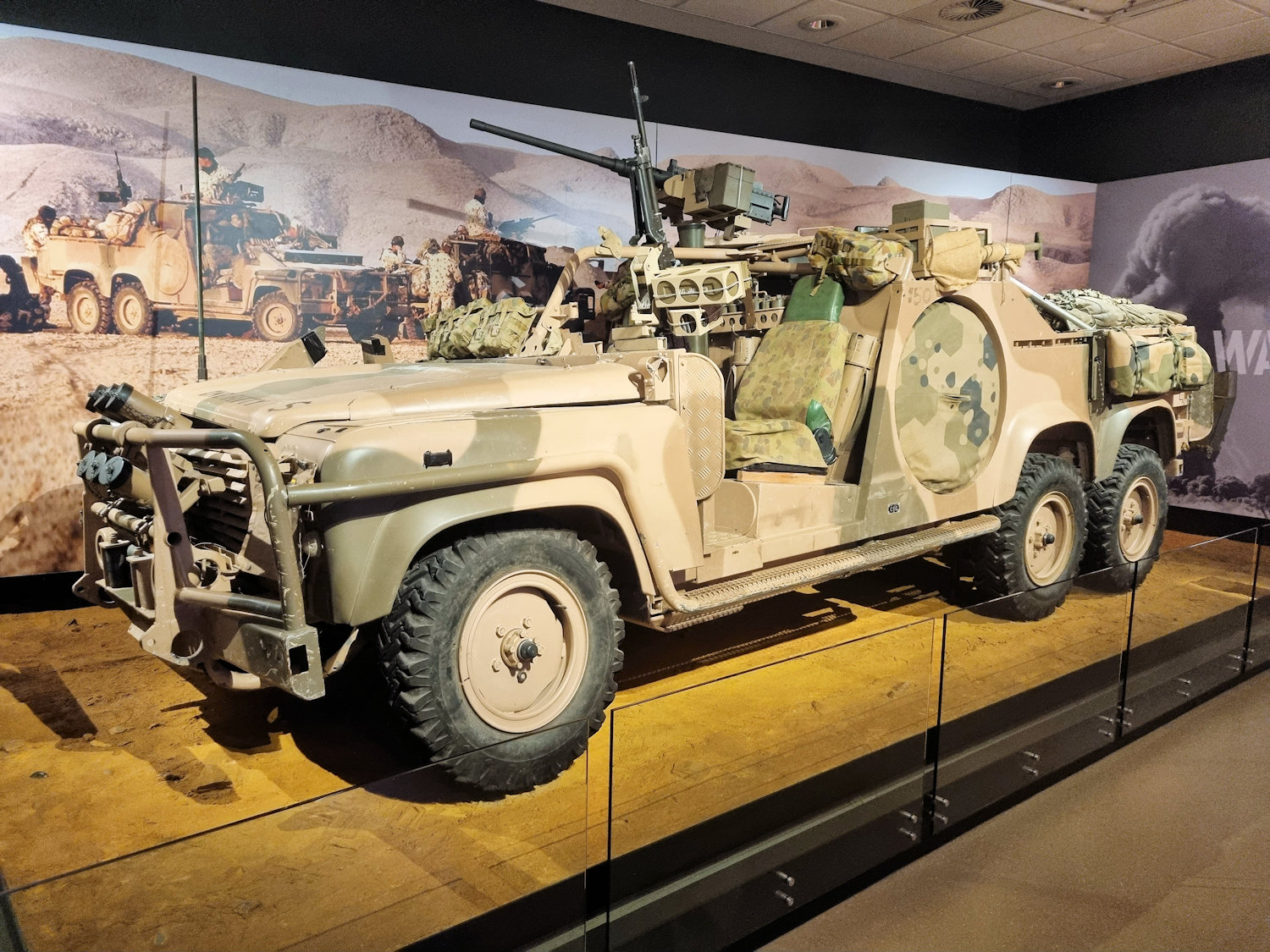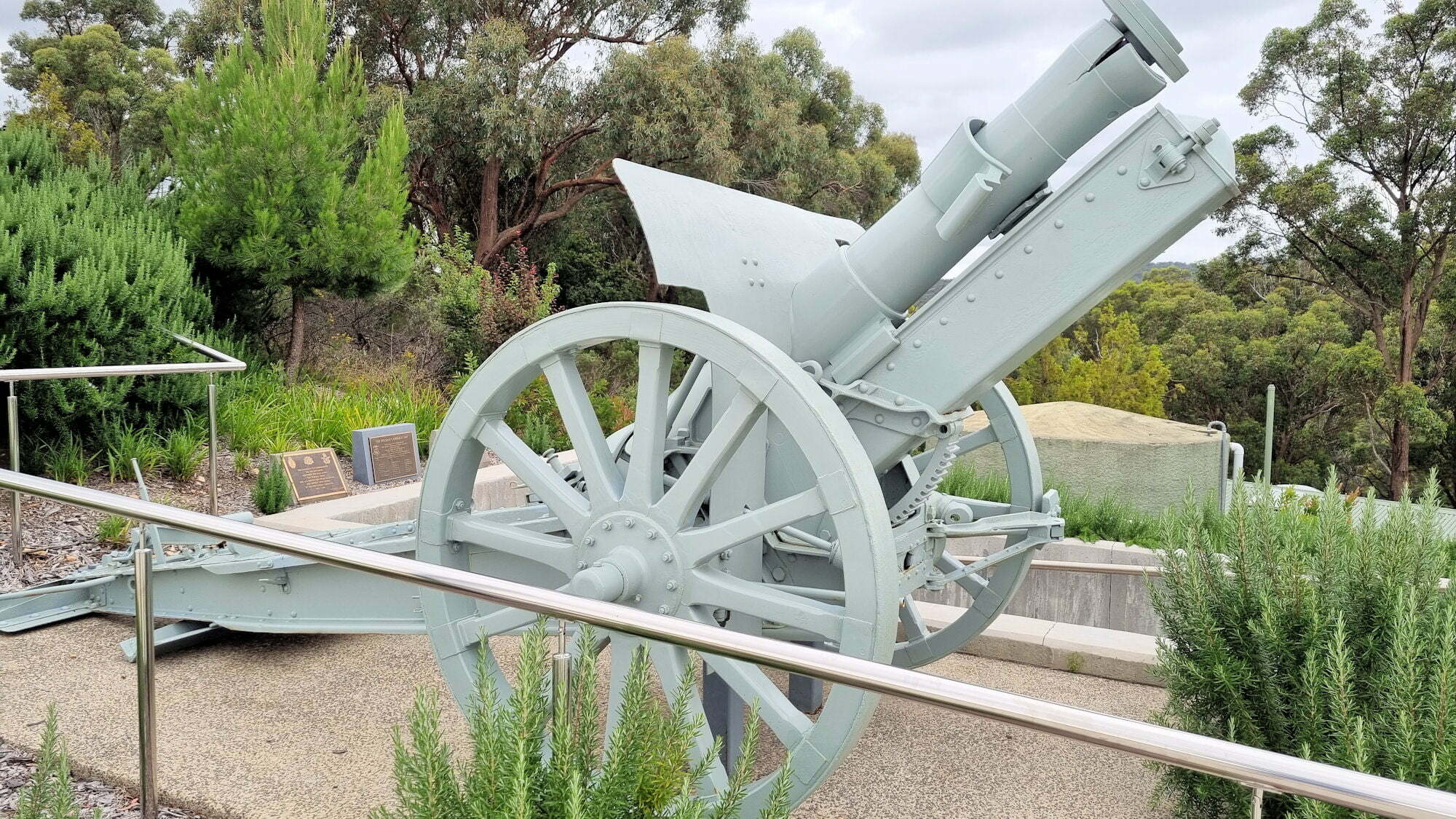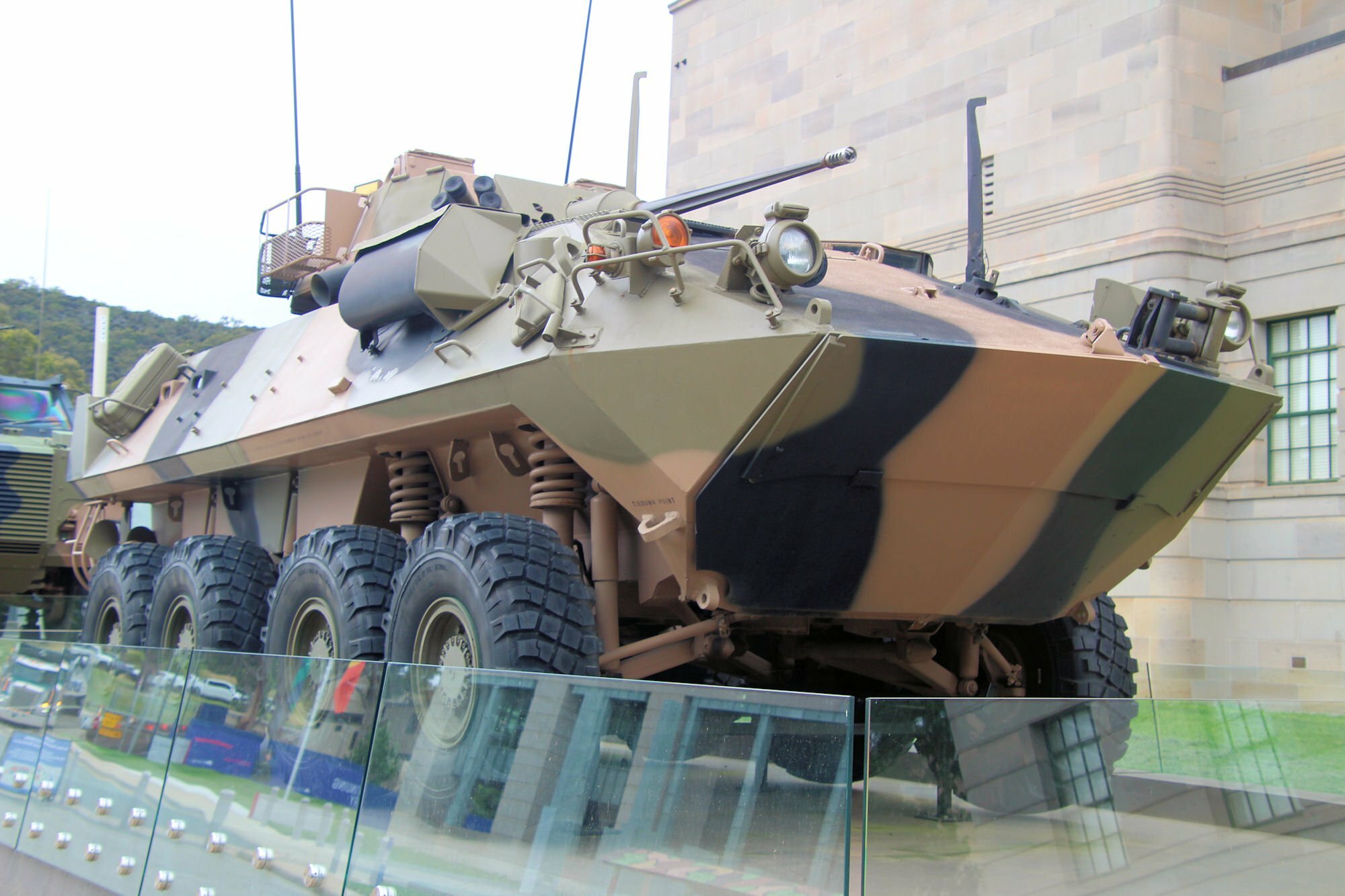Australian War Memorial 1945 to Today
During our previous trip to Canberra, the gallery “Conflicts 1945” to Today in the Australian War Memorial was closed because of the renovations. This time however, it was open, so we took the opportunity to look around.
This gallery commemorates all the conflicts involving Australians from 1945 to today. This includes Korea, Malaya, Vietnam, East Timor, Iraq and Afghanistan as well as numerous peace-keeping operations.
Korean War
This section commemorates Australia’s participation in the Korean War, particularly the army’s 3RAR, the RAAF’s 77 Squadron and the Royal Australian Navy.
Of the 17,000 Australians who served in Korea, casualties numbered more than 1,500, of whom 339 were killed. The majority served with the Australian Army.
The RAAF’s 77 Squadron was initially equipped with North American P-51 Mustangs, but these were later replaced with Gloster Meteor jet fighters. These, however, were outclassed as a fighter by the faster and more manoeuvrable MiG-15 operated by the Chinese and North Korean’s. As a result, they undertook ground attack missions in support of UN forces.
The RAN stationed HMS Sydney in Korean waters equipped with Firefly and Sea Fury aircraft. These made over 2,700 sorties, losing 9 aircraft with three aircrew killed.

Vietnam War
Australia’s involvement in the Vietnam War lasted from 1962 until 1973. Over 60,000 Australians participated, the majority being from the army. Of these 523 were killed and nearly 2,400 wounded.
Long Tan Cross
One of the most interesting displays in the Long Tan Cross, erected after the Battle of Long Tan, to commemorate those who died.
In August 1966 a company of 6RAR was engaged in one of Australia’s heaviest actions of the war, in a rubber plantation near Long Tan. The 108 soldiers of D Coy held off an enemy force, estimated at over 2000, for four hours in the middle of a tropical downpour. They were greatly assisted by a timely ammunition resupply by RAAF helicopters, close fire support from Australian artillery, and the arrival of reinforcements in APCs as night fell. When the Viet Cong withdrew at night fall, they left behind 245 dead, but carried away many more casualties. Seventeen Australians were killed and 25 wounded, with one dying of wounds several days later.
Displayed in the Dong Nai Museum in Bien Hoa after the war, the Government gifted it to Australia in 2017.
Other Vietnam War Displays
Representing the Royal Australian Navy’s contribution to the war is a model of the aircraft carrier HMAS Sydney. Other Australian ships provided escort, or fire-support duties, while aircrew served with US forces.
The Australian Army has displays covering the major equipment used, including artillery, an armoured personnel carrier and an Iroquois helicopter in the act of inserting troops.





Iraq and Afghanistan
This section covers Australia’s more recent involvement in Iraq and Afghanistan.



Peace Keeping
Some of Australia’s more important and long-term engagements have been peacekeeping deployments. These have been important because they assist in stabilizing areas of unrest while helping the local people recover from or avoid conflict. A map illustrating where deployments are or have been was very interesting. Many of these have not been well represented in the press, despite their contribution to world peace.


What Did We Think?
As the War Memorial continues its redevelopment, older areas such as this will be modernised. It is still an amazing pace to visit because of what it represents and has many great displays.



































